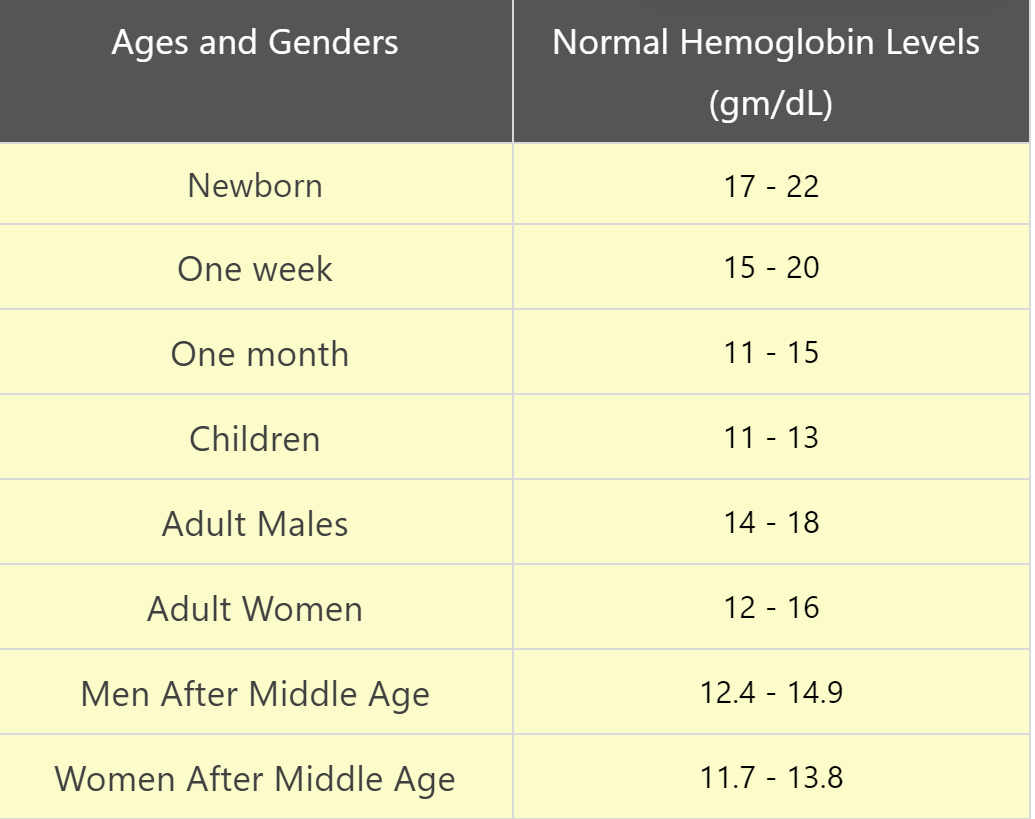What is hemoglobin(Hgb, Hb)?
Hemoglobin(Hgb, Hb) is a protein in red blood cells that carries oxygen from the lungs to your body’s tissues and returns carbon dioxide from the tissues back to your lungs.
Hemoglobin is made up of four protein molecules(globulin chains) that are connected together. Each globulin chain contains an important iron-containing porphyrin compound termed heme. Embedded within the heme compound is an iron atom that is vital in transporting oxygen and carbon dioxide in our blood. The iron contained in hemoglobin is also responsible for the red color of blood.
Hemoglobin also plays an important role in maintaining the shape of the red blood cells. In their natural shape, red blood cells are round with narrow centers resembling a donut without a hole in the middle. Abnormal hemoglobin structure can, therefore, disrupt the shape of red blood cells and impede their function and flow through blood vessels.
Why it’s done
You may have a hemoglobin test for several reasons:
- To check your overall health. Your doctor may test your hemoglobin as part of a complete blood count during a routine medical examination to monitor your general health and to screen for a variety of disorders, such as anemia.
- To diagnose a medical condition. Your doctor may suggest a hemoglobin test if you’re experiencing weakness, fatigue, shortness of breath or dizziness. These signs and symptoms may point to anemia or polycythemia vera. A hemoglobin test may help diagnose these or other medical conditions.
- To monitor a medical condition. If yu’ve been diagnosed with anemia or polycythemia vera, your doctor may use a hemoglobin test to monitor your condition and guide treatment.
What are normal hemoglobin levels?
The hemoglobin level is expressed as the amount of hemoglobin in grams (gm) per deciliter (dL) of whole blood, a deciliter being 100 milliliters.
The normal ranges for hemoglobin depend on the age and, beginning in adolescence, the gender of the person. The normal ranges are:
All of these values may vary slightly between laboratories. Some laboratories do not differentiate between adult and “after middle age” hemoglobin values. Pregnant females are advised to avoid both high and low hemoglobin levels to avoid increased risks of stillbirths (high hemoglobin – above the normal range) and premature birth or low-birth-weight baby (low hemoglobin – below the normal range).
If a hemoglobin test reveals that your hemoglobin level is lower than normal, it means you have a low red blood cell count (anemia). Anemia can have many different causes, including vitamin deficiencies, bleeding and chronic diseases.
If a hemoglobin test shows a higher than normal level, there are several potential causes — the blood disorder polycythemia vera, living at a high altitude, smoking and dehydration.
Lower than normal results
If your hemoglobin level is lower than normal, you have anemia. There are many forms of anemia, each with different causes, which can include:
- Iron deficiency
- Vitamin B-12 deficiency
- Folate deficiency
- Bleeding
- Cancers that affect the bone marrow, such as leukemia
- Kidney disease
- Liver disease
- Hypothyroidism
- Thalassemia — a genetic disorder that causes low levels of hemoglobin and red blood cells
If you’ve been previously diagnosed with anemia, a hemoglobin level that’s lower than normal may indicate a need to alter your treatment plan.
Higher than normal results
If your hemoglobin level is higher than normal, it may be the result of:
- Polycythemia vera — a blood disorder in which your bone marrow makes too many red blood cells
- Lung disease
- Dehydration
- Living at a high altitude
- Heavy smoking
- Burns
- Excessive vomiting
- Extreme physical exercise
Post time: Apr-26-2022

